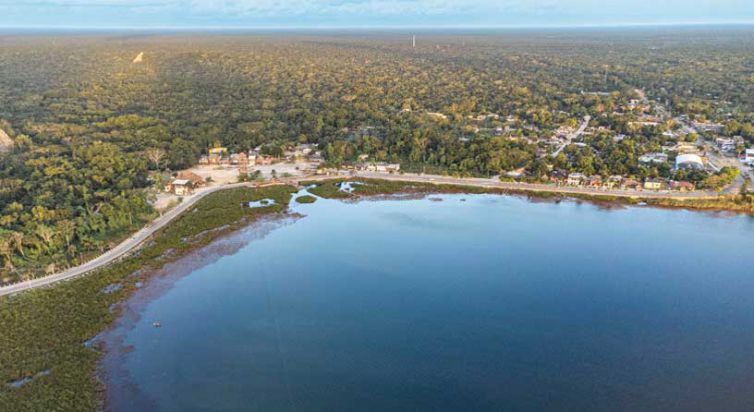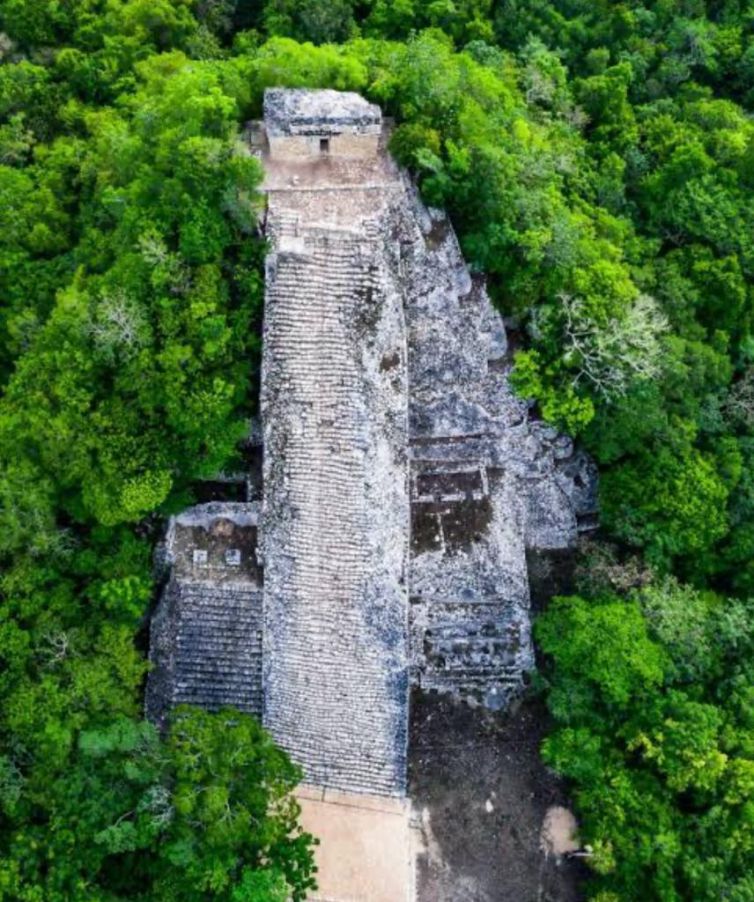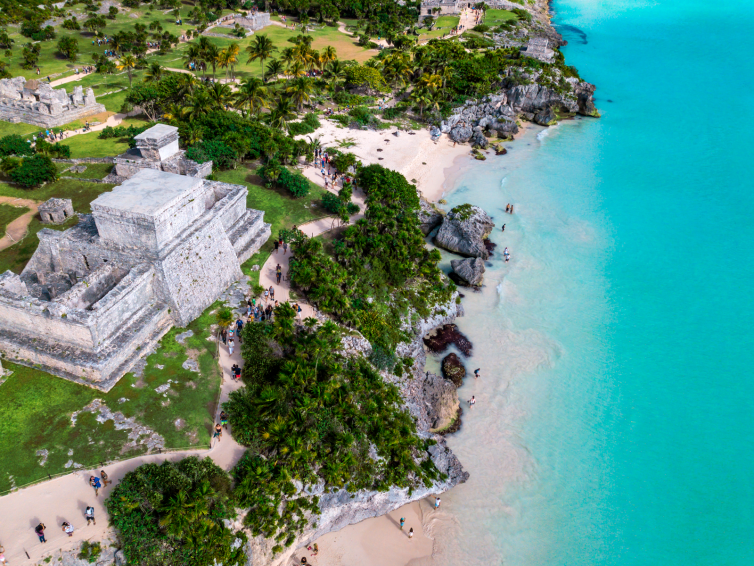Pyramids in Tulum, is undoubtedly the most important site on the Quintana Roo coast. Due to its location in front of the Caribbean sea, the perfect condition of its structures and wall paintings. We know that its name means wall, which delimits the main complex on its north, south and west sides. Aswell is located in front of the Caribbean Sea and has five accesses and two watchtowers.
50%off
The highest
The castle, the tallest structure of pyramids in Tulum, which still preserves a temple with three entrances decorated with serpentine columns and two zoomorphic masks in the corners that symbolize duality. In front of the Castle, there is a platform where archaeologists point out that dances were practiced and to the southwest is the Temple of the Initial Series, where the earliest documented date in Tulum was found: 564 Ac.
The temple of the Descending God has a small base where a building decorated with the image of that deity was built. However today we know this is the main iconographic element of the city, since it can be found in various structures. Right in front of this set, is the road. You can see several buildings, but the most important wit no doubt is the Temple of the Frescoes. Whose wall paintings highlight a series of supernatural beings that live in the Underworld. And this one shows the most important testimonies of the mural painting of the Mayan culture. Continuing along the same road, you can see the palaces known as the Palace of Columns. In the samew way there is the Palace of Halach Uinik. Which in Mayan means the governor. The most politically important person within the walled enclosure.
In the northeast access, the Casa del Cenote (Cenote House). It documents the importance that the Mayans gave to the aquatic cult linked to the cenotes. And that surely served to supply water to the place. Near of this temple to the God of the Wind is observed. Where It has recently been discovered that in hurricane season it works as a kind of alarm. Also related to Kukulcán, god of the winds.






